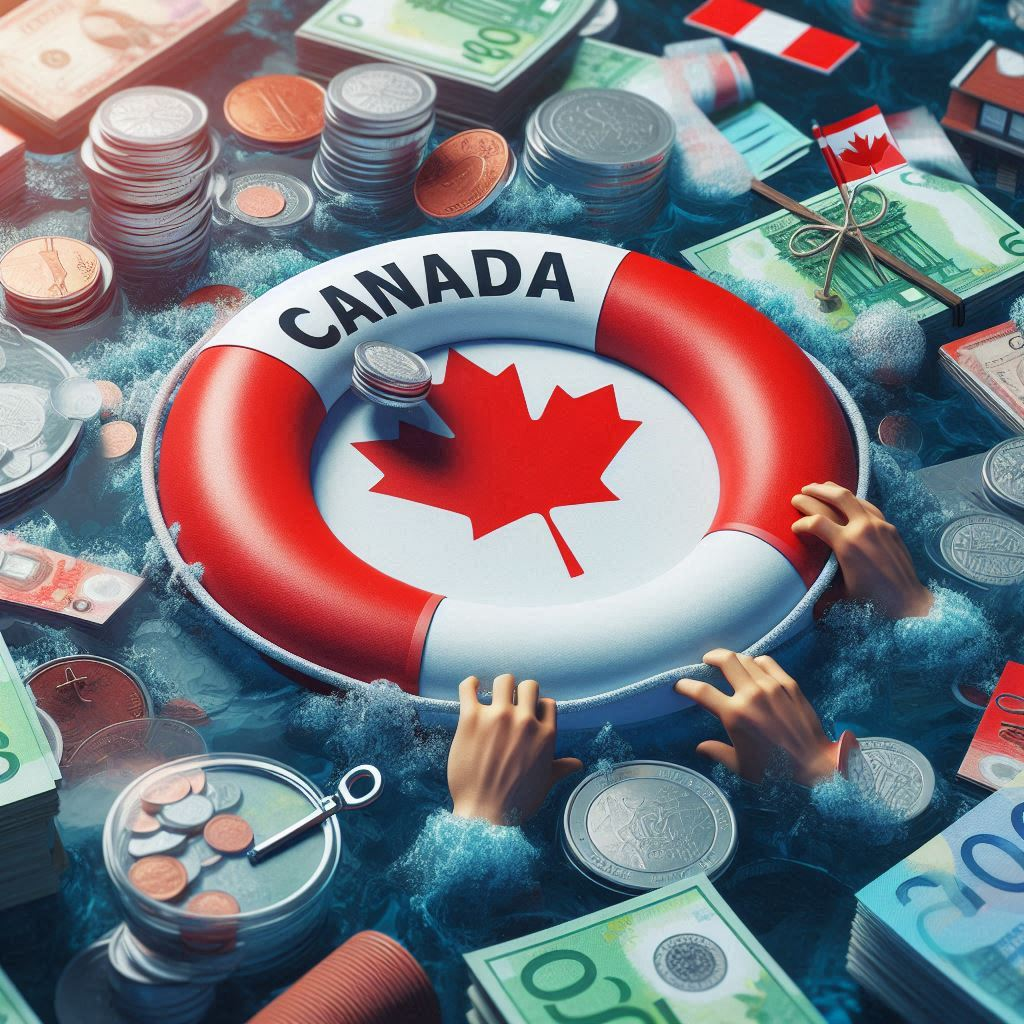Drowning in Debt: Canada’s Consumer Debt Crisis
Mark and Emily, a young couple in Vancouver, had a dream of owning their own home. They worked hard, saved diligently, and finally got a mortgage – but it came with a hefty price tag. Credit card bills piled up as they tried to furnish their new place, car payments were unavoidable, and the occasional takeout meal seemed like a justifiable treat after long days at work. Before they knew it, they were drowning in debt, their dream home feeling more like a financial prison.
Mark and Emily aren’t outliers. Canada has grappled with a consumer debt crisis for many years. While owning a nice home, having a car, and enjoying some of life’s pleasures are reasonable goals, for many Canadians, the path to those goals is paved with a dangerous amount of debt.
Understanding the Debt Landscape
- Household Debt: It’s the Highest Canada consistently ranks among the countries with the highest household debt-to-disposable income ratios in the world. Statistics Canada reports this figure exceeded 180% in 2021, meaning Canadians owe almost $2 for every dollar of disposable income they have.
- Credit Cards: The Biggest Culprit While mortgages form a significant chunk of household debt, it’s credit card debt that rings the loudest alarm bells. High interest rates and the ease of tapping into credit have created a perfect storm for many Canadians.
- Rising Interest Rates: Making Things Worse The Bank of Canada’s efforts to combat inflation with interest rate hikes are a double-edged sword. While intended to slow spending, rising rates make existing debt even more expensive to carry for those already struggling.
The Hidden Factors Driving the Debt
- Stagnant Wages: For many Canadians, incomes simply haven’t kept up with the soaring cost of living. Borrowing has become a way to bridge the gap between what people earn and what they need just to get by.
- Easy Access to Credit: Credit cards are readily available, and lenders actively market loans and lines of credit. Temptation is always one click away.
- The “Keeping Up” Mentality: Social pressures and a consumer culture that promotes instant gratification contribute to a sense among many that they need to spend to keep up with certain lifestyles.
The Real-World Fallout of High Debt
- Crushing Financial Stress: Carrying a heavy debt load creates immense financial anxiety, affecting mental and even physical health.
- Limited Future Choices: Being saddled with debt can delay major life milestones like buying a home, starting a business, or saving for retirement.
- Relationship Strain: Money worries are a leading cause of stress and conflict in relationships.
- Vulnerability to Economic Shocks: People with high debt levels are extremely vulnerable to setbacks like job loss or unexpected expenses.
Are There Solutions? The Path Forward
There’s no one-size-fits-all answer, but combating Canada’s consumer debt crisis may involve a mix of:
- Individual Responsibility: Financial literacy programs can help people understand budgeting, responsible credit use, and the long-term consequences of debt.
- Government Policies: Potential actions could include capping interest rates for predatory lending, offering more debt counseling resources, and supporting policies that help boost wages.
- Addressing The Cost of Living: Tackling underlying issues like the housing crisis is essential to reduce Canadians’ reliance on debt to cover basic necessities.
Conclusion
Canada’s high consumer debt is a complex problem that threatens the financial well-being of individuals and families. Acknowledging the extent of the crisis and its detrimental impact is a crucial first step. Building a more sustainable financial future for Canadians requires a concerted effort focused on responsible spending, greater financial awareness, and policies that help tackle systemic issues that push people into debt.
Resources for Help:
- Credit Counselling Canada: https://creditcounsellingcanada.ca/
- Financial Consumer Agency of Canada: https://www.canada.ca/en/financial-consumer-agency.html
- Your local bank or credit union (for debt consolidation options)

